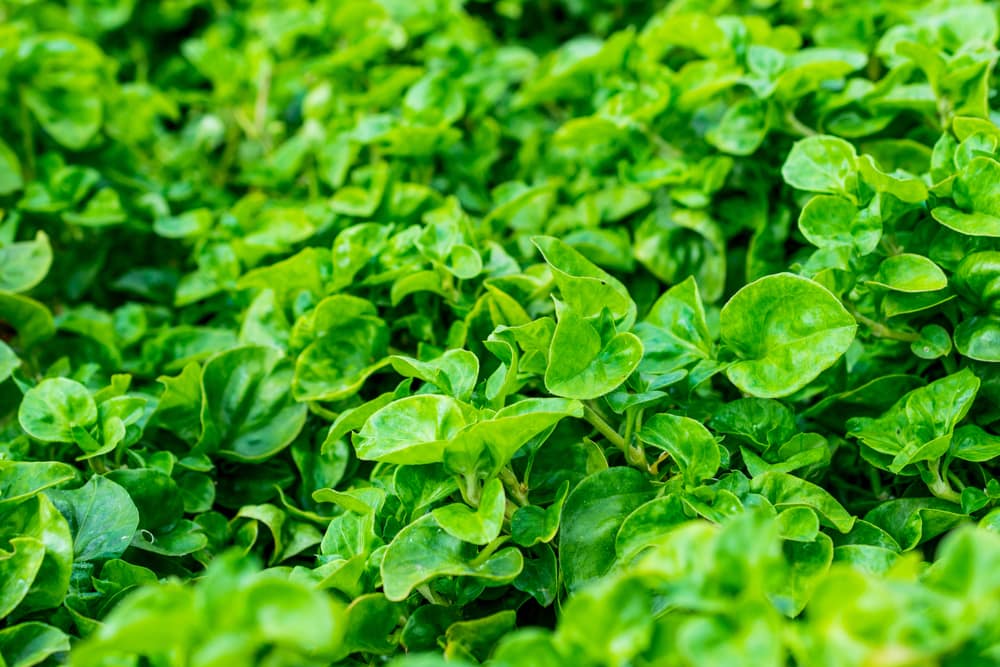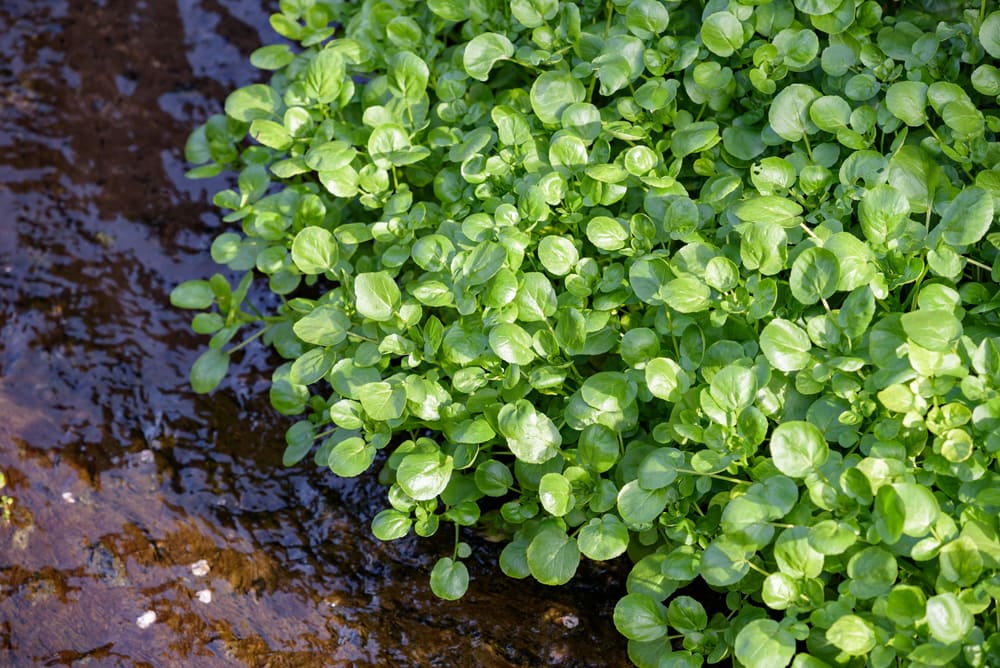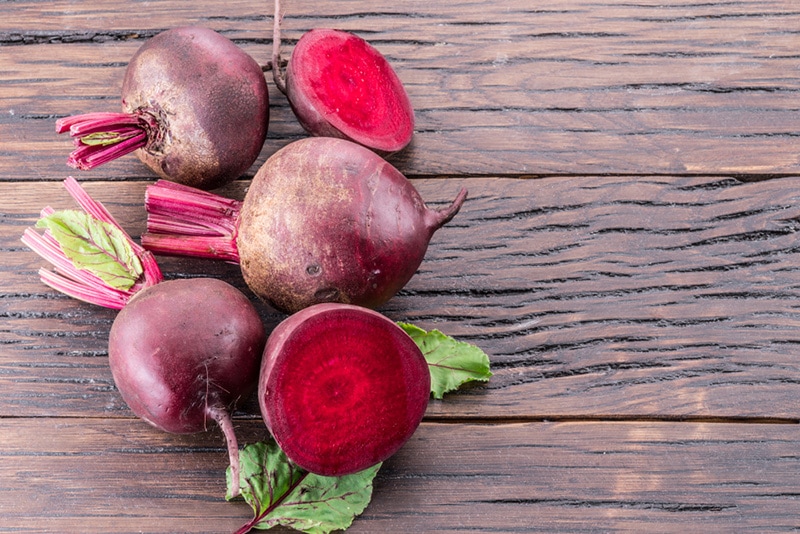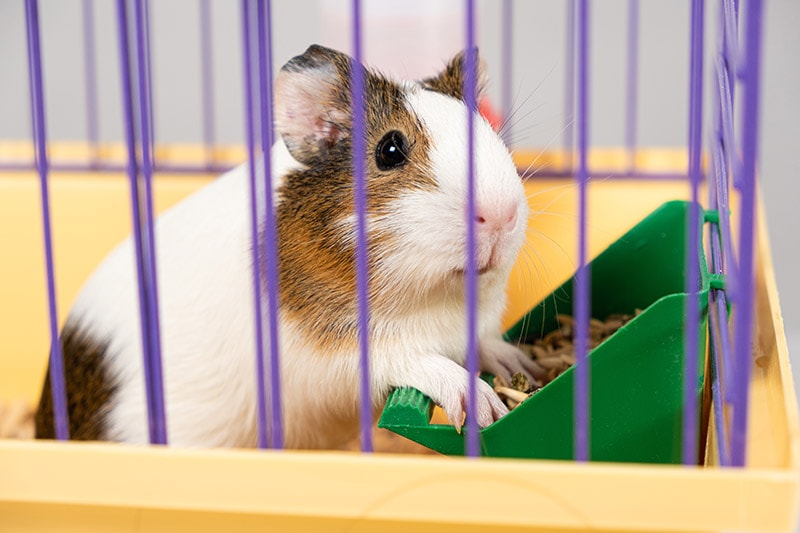Can Guinea Pigs Eat Watercress? Vet-Approved Facts & Safety Guide

By Misty Layne
Updated on

Click to Skip Ahead
Guinea pigs are grazers by nature, so the majority of their diet should be made up of hay and other leafy greens, along with supplemental pellets and other vegetables. These tiny creatures are actually big fans of vegetables, particularly the green ones. Green veggies are an excellent supplement to your guinea pig’s regular diet because these help your pet stay hydrated and the fiber can aid in dental health and digestion. But not all vegetables are necessarily safe for your pet to eat.
If you’ve been considering adding some watercress to your guinea pig’s greens, you’ll be glad to know that this is a safe (and nutritious!) vegetable for your pet. However, it’s also a veggie you don’t want to overfeed them. Here’s what you should know about watercress and your guinea pig!
Nutritional Benefits of Watercress
If you’re unfamiliar with watercress, it’s a leafy green that grows in shallow streams. And this is one veggie full of nutrients (and low-calorie to boot!). There’s plenty of good it can offer your guinea pig, so let’s take a closer look.
For starters, watercress has a lot of vitamin C, which is needed in the body to help the immune system stay healthy and strong, to help the cells grow and repair, and aid in wound healing. And since guinea pigs can’t produce their own vitamin C like many other mammals can, they have to get it from their diet.
Vitamin C isn’t the only vitamin this plant has to offer, though. Watercress is also a wonderful source of vitamin K, which is required in the body to enable blood to clot, and vitamin A, which supports healthy vision, as well as growth and development.
Watercress also has fairly high amounts of potassium and calcium. Potassium helps regulate fluid levels in the body and calcium is important for bone health and muscle function.
Add to all that the fact watercress is high in antioxidants (which help prevent cellular damage and can aid in preventing chronic diseases), has very little calories (so it’s excellent for weight management), and helps your pet stay hydrated, and you’ve got one healthy vegetable!
So, what’s the catch?

The Potential Risks of Watercress
Like with many vegetables you can safely give your guinea pig, there are a few potential risks to watercress.
The first risk of giving watercress to your guinea pig is potential digestive problems. Watercress may lead to bloating and diarrhea in your pet if you feed them too much. Watercress can also be a bit acidic at times, which could lead to an upset stomach, as well. This vegetable has a high water content, so while it’s good for hydration, too much water at once could lead to digestive issues, too. Any vegetable should be introduced to your pet slowly, in tiny quantities, to get their stomach used to them.
The next risk mainly applies to those guinea pigs who are prone to getting bladder stones. Watercress contains quite a bit of calcium, which can aid in the formation of bladder stones. If your pet is perfectly healthy, you should have no problems giving them watercress in moderation. But if your guinea pig has had bladder stones in the past, you may want to avoid this food.
Finally, like most veggies, watercress may be treated with pesticides, so washing this food thoroughly before giving it to your pet is important. Otherwise, the watercress may have harmful chemicals lingering, and those could harm your guinea pig.

How to Add Watercress to Your Guinea Pig’s Diet
Before anything else, be sure to talk to your veterinarian to ensure that any food you add to your guinea pig’s diet is safe and in proper amounts. Remember to add watercress to your guinea pig’s diet slowly!
How should you feed watercress to your pet? First, wash this vegetable thoroughly to remove any chemicals or dirt. Watercress should be fresh and green, so if you see any leaves that are wilted or yellow, remove them. These wilted leaves also tend to be bitter, so feeding them to your pet could make them dislike this veggie. Start by offering your pet a stem of watercress to see how their stomach handles it. Once you know their stomach is fine (and whether they like the watercress), you can work up to feeding them more. You can safely feed your pet this vegetable a couple of times a week by giving them three or four stems, but you’ll need to work up to that number. Otherwise, your pet may experience an upset stomach, diarrhea, or gassiness. This veggie can be used as a treat or be mixed in with daily meals.
Final Thoughts
Watercress is a highly nutritious vegetable for your guinea pig! This leafy green is packed with all sorts of good things for your pet, so it makes an excellent addition to your guinea pig’s diet. However, this veggie should only be given in moderation due to the risk of it giving your pet an upset stomach. It’s also a vegetable that should be avoided for those guinea pigs prone to getting bladder stones. Otherwise, though, this is one tasty, nutritious treat or meal addition for your pet!
Featured Image Credit: Bus Stocker, Shutterstock













